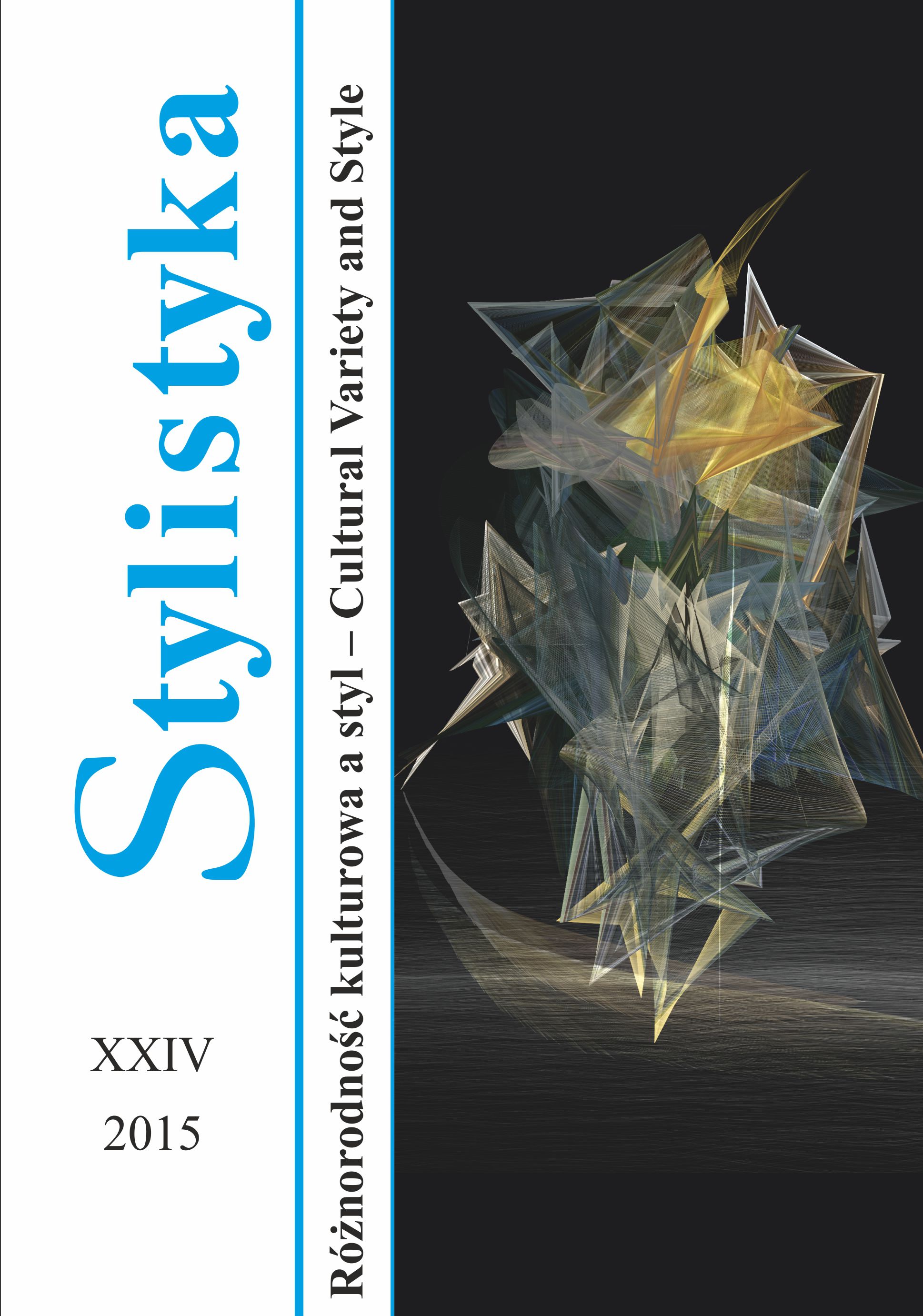COMPARING THEORETICAL APPROACHES TOWARDS STYLE: SEVERAL POSSIBLE CRITERIA AND CHANGING CULTURAL CONTEXTS
COMPARING THEORETICAL APPROACHES TOWARDS STYLE: SEVERAL POSSIBLE CRITERIA AND CHANGING CULTURAL CONTEXTS
Author(s): Michal KřístekSubject(s): Language and Literature Studies, Philology
Published by: Uniwersytet Opolski
Keywords: comparative stylistics; cultural contexts; 5wh-sequence; style; extralinguistic factors
Summary/Abstract: The main aim of this contribution is to propose a general scheme that provides the possibility of comparing theoretical approaches to style, including approaches rooted in various cultural contexts. This kind of general scheme from the area of comparative stylistics offers the possibility to compare works on style written in various periods and various areas. The proposed scheme describing theoretical concepts of style, moving from linguistic to extra-linguistic factors, is a sequence of five simple what-questions (in English, for the sake of the scheme could be simplicity referred to, e.g. as a “5 wh-sequence”): 1) WHAT definition of style is used? 2) WHAT kind of text is dealt with? 3) WHAT varieties of the particular language are taken into consideration? 4) WHAT is the purpose of work with texts? 5) WHAT other extralinguistic factors are taken into consideration? Since each proposed scheme must be tested in practice, two works are chosen for a brief test – namely, two works dealing with Slovak stylistics, published over nine decades apart, which in this particular case means each of them operated in a considerably different cultural context. The main differences between the compared works are 1) the aim – prescription vs. description, and 2) the supposed reader – secondary school students vs. university students (the academic community in general, respectively). Other differences are caused mainly by the different stages of the language as well as metalanguage development, and with the development of the language community in general.
Journal: Stylistyka
- Issue Year: 2015
- Issue No: XXIV
- Page Range: 380-386
- Page Count: 7
- Language: English

